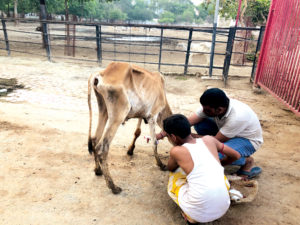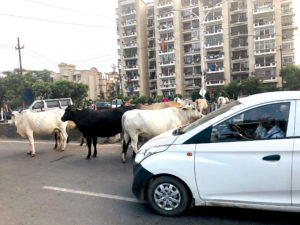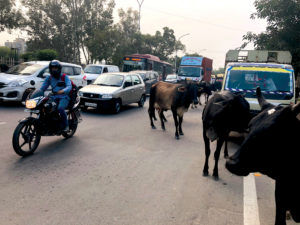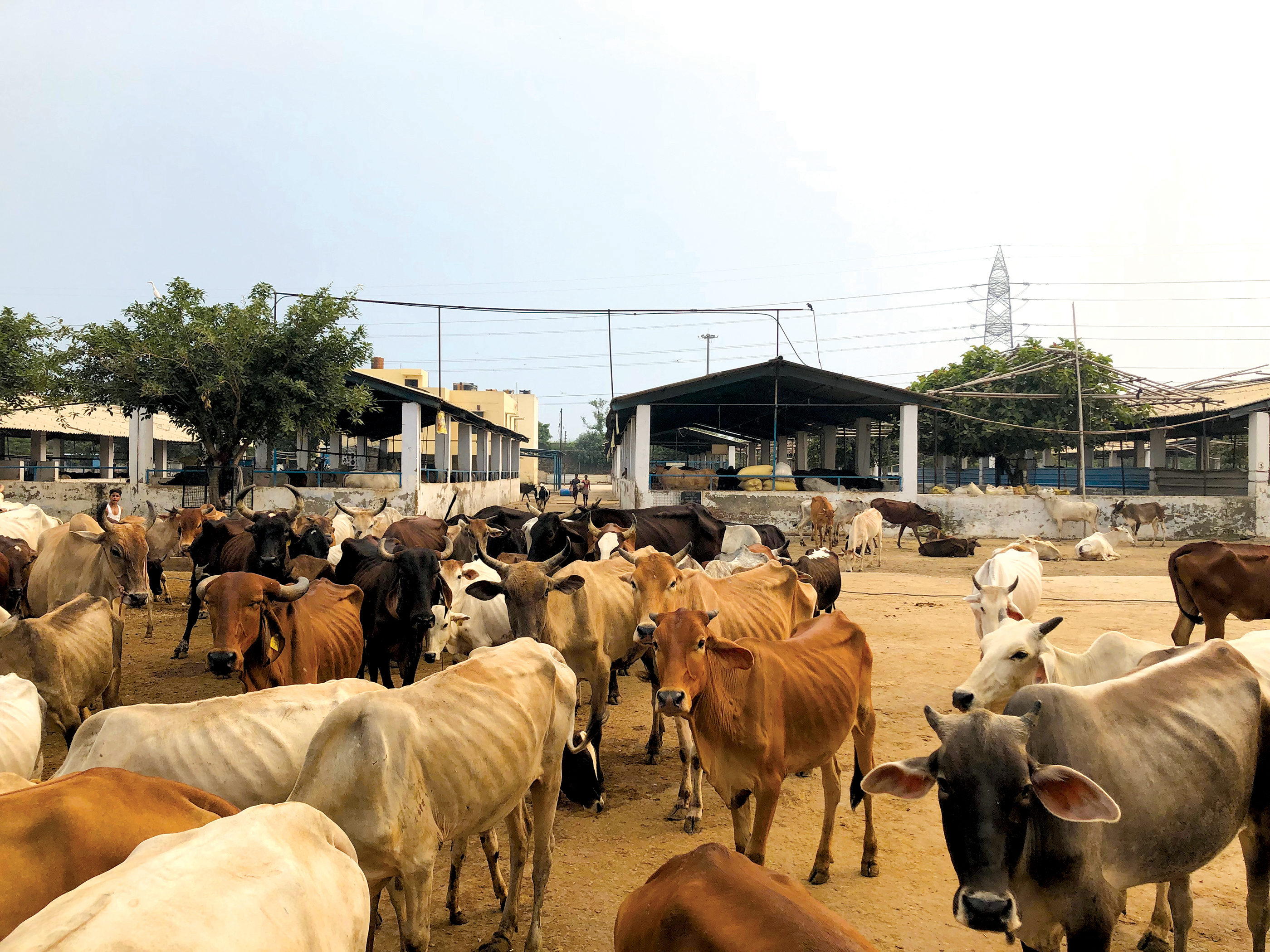…they create quite a traffic hazard on Noida’s roads. Who will stop dairy owners from sending their cattle to roam the city during the day?
In Noida’s Sector 49, a herd of cows is seen creating hazards for both traffic on roads and pedestrians on footpaths. The scene is repeated in service lanes at some prime locations in Noida.
As for the roads outside Metro stations, they are a mess of e-rickshaws, autos, cows and dogs. Consequently, traffic jams are commonplace.
Last year, three cows and a 22-year-old man died in a mishap in Noida. While two cows were rammed by a speeding cab, a young biker collided with a cow sitting right in the middle of the road in Sector 127.
These incidents again ignited the debate of cattle menace in the city and the need to take controlled measures to ascertain public and animal safety.
Some of the prime locations where the cattle menace is at its peak in Gautam Budh Nagar include Sector 49, Sector 137, Harola and Mamura Chowk and Chhalera. What is common to all these locations is that they are situated near villages. Some of the locals say that as the green area depletes and turns into concrete jungles, these animals are seen moving on roads.

A dairy worker from Som Bazar in Chhalera explains, “These cows and buffalo require some grass and small plants. Hence they roam on the streets around the city and get to eat well near the dividers, where grass and plants are growing. But this is where they pose a threat to traffic.”
He adds that even after knowing the risks they pose to humans and cars on the road, “The cattle are freed by their owners during the day as it becomes difficult to feed all of them.”
The fear factor
Deepali, a resident of Sector 62 near Mamura Chowk, claims, “Bulls play havoc in our area. Despite authorities’ attempts to manage the problem, the stray bulls create a sense of fear while we walk on roads.”
She further adds, “Cattle are more often seen on the roads during the rainy season. In my locality, where the streets are quite narrow, it’s a go or leave it situation. I and my friends have narrowly escaped encounters with cows and bulls in the Mamura Chowk area.”

Meanwhile, to tackle the issue of cattle menace, a campaign was initiated by a group of local residents of Noida which was named as ‘Selfie with Cows’ wherein the residents used to click selfie with cows and then post it on micro-blogging website Twitter, tagging the district administration and New Okhla Industrial Development Authority.
The main objective of the campaign is to identify the locations where the cattle menace is greater and direct the administration or volunteers to take adequate measure in rehabilitating these bovines in gaushalas.
Earlier, in January this year, the district administration had allotted 30 acres of land for two temporary cow shelters, one of which was situated in Nayabans in Dadri (20 acres), the other one in Wajidpur village (10 acres). Whether this lessens the menace of cattle on roads, leading to mishaps and traffic congestion, will have to be seen.
Care via Trust
To see how stray cattle are being taken care of in existing shelters, Patriot visited one of the gaushalas (cow shelters) located in Sector 125, Srijee Gau Sadan.
A 14-year-old boy who hails from Mahoba district and takes care of the cows says, “Around 1,500 cows are present in this shelter while around 200 provide milk. All of them are fed by the trust.” He adds, “Stray cows, if they are brought here, are taken in. But most of them are sent to the animal shelter adjacent to this gaushala.”
On being asked about the hospital in the premises of the cow shelter, the boy claims, “Yes, we have a cow hospital. The medical facility is adequate. But daily around one or two cows pass away.”
Sonu, the caretaker of the gaushala, says, “We don’t lack anything. We have to store all the fodder — whether its chara, bhusa or dana — because we can’t function on a daily basis and have to store all the essentials.”

Asked if aid is provided by the UP government, Sonu said, “All these food items and medicines come from donations by members of the Trust and by selling milk produced by the cows. As per my information, we haven’t received any aid from the government but we are hopeful that we will receive it.”
The UP government led by CM Yogi Adityanath had sanctioned Rs 500 crore in the state Budget 2019 for the welfare of cows and their protection. And recently on August 8, the UP cabinet approved ‘Mukhyamantri Nirashrit Besahara Govansh Sahbhagita Yojana’, a scheme wherein people’s participation is sought to protect stray cattle by providing Rs 30 per animal every day.
In a press brief, state minister and spokesperson Srikant Sharma had said, “Rs 109.50 crore has been sanctioned for this scheme. In the first phase, we have cleared the proposal to hand over 1 lakh destitute cows currently in government-run shelters to interested people for protection. Rs 30 per day will also be paid to them for fodder. The district administrations and veterinary officers will be assigned the responsibility of identifying such people.”
Sonu, who has been at the cow shelter for the last three years, says, “We cannot depend on anyone for the fodder as we have to feed our cattle daily and stocking is of utmost importance; if we become dependent on someone for food items and he is unable deliver, they (cows) will die of hunger.”
To become a member of the gaushala Trust, Sonu says, “One has to donate Rs 51,000. It’s a lifetime membership, and he/she will get milk as per the rate fixed by the gaushala.”
On stray cows, Sonu says, “If the authority brings them to us, we keep them. And if a cow expires, proper pits are made nearby and they are buried.” But when this reporter tried to click photographs inside the cow hospital, the caretaker objected, saying, “It could lead to misinformation and wrong message. The cows are weak and not dying but a picture may imply something else.”





